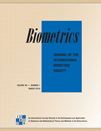Structural Nested Mean Models for Assessing Time-Varying Effect Moderation
Abstract
Summary This article considers the problem of assessing causal effect moderation in longitudinal settings in which treatment (or exposure) is time varying and so are the covariates said to moderate its effect. Intermediate causal effects that describe time-varying causal effects of treatment conditional on past covariate history are introduced and considered as part of Robins' structural nested mean model. Two estimators of the intermediate causal effects, and their standard errors, are presented and discussed: The first is a proposed two-stage regression estimator. The second is Robins' G-estimator. The results of a small simulation study that begins to shed light on the small versus large sample performance of the estimators, and on the bias–variance trade-off between the two estimators are presented. The methodology is illustrated using longitudinal data from a depression study.




